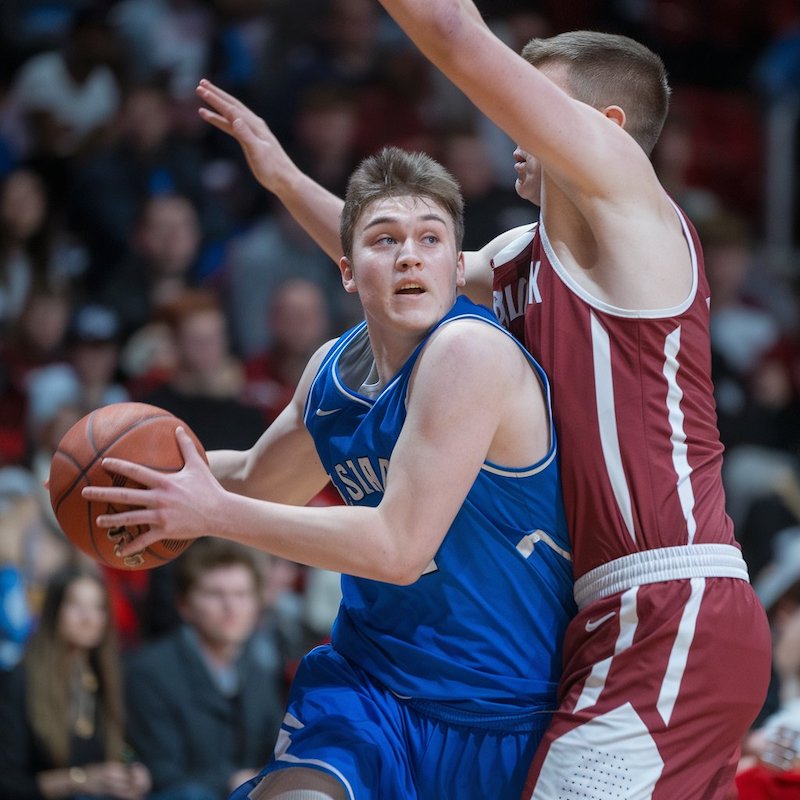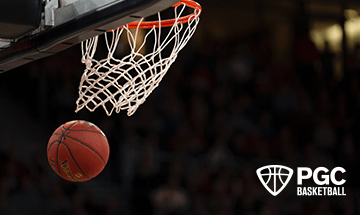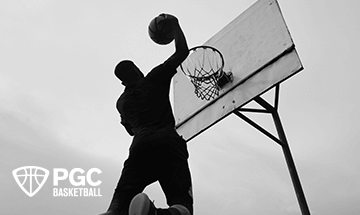You Don’t Fake Enough on Offense
Fakes, almost all fakes, work great in games, and there is a very good reason why.
Most players, even a lot of good ones, don’t fake, or at least not very often. As a result, very few defenders have had the opportunity to react to fakes, so when they meet one in a game, they fall for it and get faked out.
The most important rule on faking is,
“Use fakes!”
Need this be further emphasized?
You don’t fake enough. Fake more. Fake more than you do now. Fake, fake, fake.
Lead fakes
Fake passes that lead the defense away from your pass are especially useful against zone defenses. They require no particular ability or effort. Players just forget to use them.
Foot fakes
These are extremely useful when you have the ball in scoring position and you haven’t dribbled yet. The biggest problem with foot fakes is that players tend to hurry and walk with the ball, and referees love to make that call. You have to be careful.
If you are going to step one way and cross over, make sure you step and-step again with the same foot. Don’t drag that back (pivot) foot at all because referees can’t wait to blow their whistle on this move. This is so true that it isn’t even wise to try a fake-and-crossover move in the second half of a close game unless you have already used it earlier and the referees have learned that you can make the move without walking. It doesn’t do you any good to note a day later on the game films that you really didn’t walk.
Don’t surprise referees with new things at the end of a big game when they are as tense and anxious as you are.
fake-and-crossover
To do it well and make it work, be sure you don’t just move your foot. Move your head and your shoulders and your hip and the ball, and do it all violently so it really looks as though you are going that way. Violently does not necessarily mean quickly, at least not like lightning.
Defenders need time to go for your fakes. Don’t make the mistake of making your fakes so fast that defenders, even those who are very willing to be faked out, don’t have time to go for them.
Once your body is down, coiled and ready to spring to the other side, be sure that you do spring from the down-coiled position instead of lifting your head and coming back before crossing over. The important thing is to keep your head down and shoulders down over the ball so you take full advantage of your opponent’s movement. This way you can protect the ball and place it on the floor exactly where you want it.
The biggest mistake players make in faking is that they think they have to get through the fake quickly and get on with their real purpose—their move to the basket, and the result is a poor, unconvincing fake. Stay low so you can maneuver precisely. You may think that by staying low you are sacrificing speed, but players who fake and put the ball on the floor far out in front of them, just a few inches off the floor, are very difficult to guard.
The fake-and-crossover and lead fakes against a zone are two of the more common offensive fakes. There are, of course, many other situations where faking is useful. Don’t worry too much about how to fake. Concentrate instead on your opponent. Keep trying to get him to do what you want him to do. You can learn by trial-and-error on the playground or in the backyard. Think about using the fakes you know, and work to incorporate more and more fakes into your normal game.
Related Articles
5 Habits That Can Make Undersized Point Guards Unstoppable
When it comes to basketball, size isn’t everything. For undersized point guards, mastering specific skills and habits can not only level the playing field but also make them truly unstoppable.
How To Win The Inner-Game of Basketball (and Life)
As a basketball player, just like so many other walks of life, players do not operate at max capacity because they are extremely hard on themselves and are losing the ‘inner game.’
What Does It Mean To Be Self-Disciplined?
In the game of basketball, self-discipline is a word that all coaches want players to embody on a daily basis. The word ‘Discipline’ is used for some teams as their standard of excellence, for others it is a pillar that their culture is built upon.
About PGC
PGC Basketball provides intense, no-nonsense basketball training for players and coaches. Our basketball camps are designed to teach players of all positions to play smart basketball, be coaches on the court, and be leaders in practices, games and in everyday life.
We combine our unique PGC culture with a variety of teaching methods and learning environments to maximize the learning potential of those that attend our sessions. In addition to spending 6-7 hours on the court each day, lessons will be reinforced through classroom sessions and video analysis.
Our goal at PGC is to empower you with the tools to fulfill your basketball dreams, while also assisting you in experiencing the joy of the journey.
To learn more about PGC Basketball, including additional basketball training tips and videos, visit our YouTube Channel or find us on Facebook, Instagram, and Twitter.






Share This Post